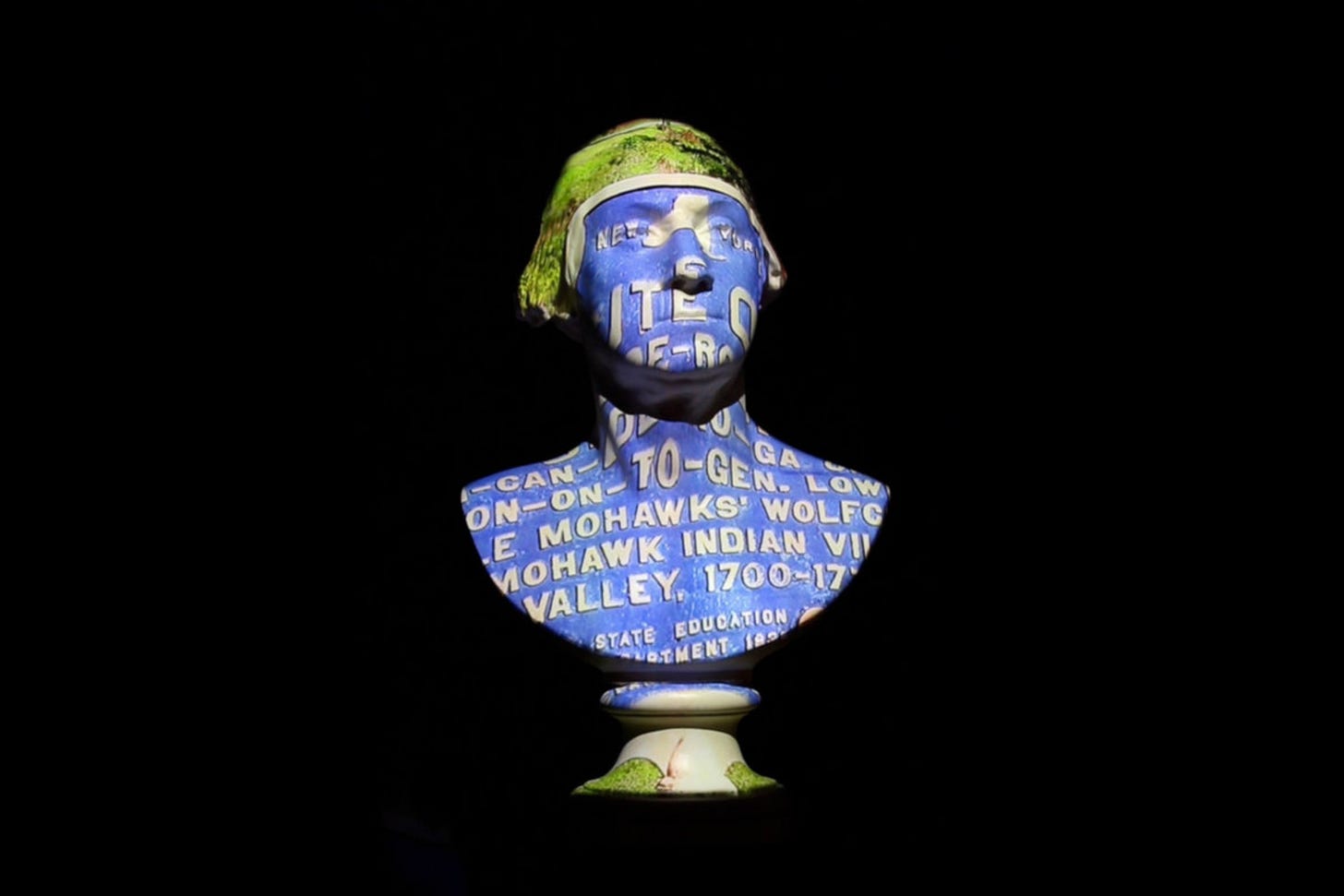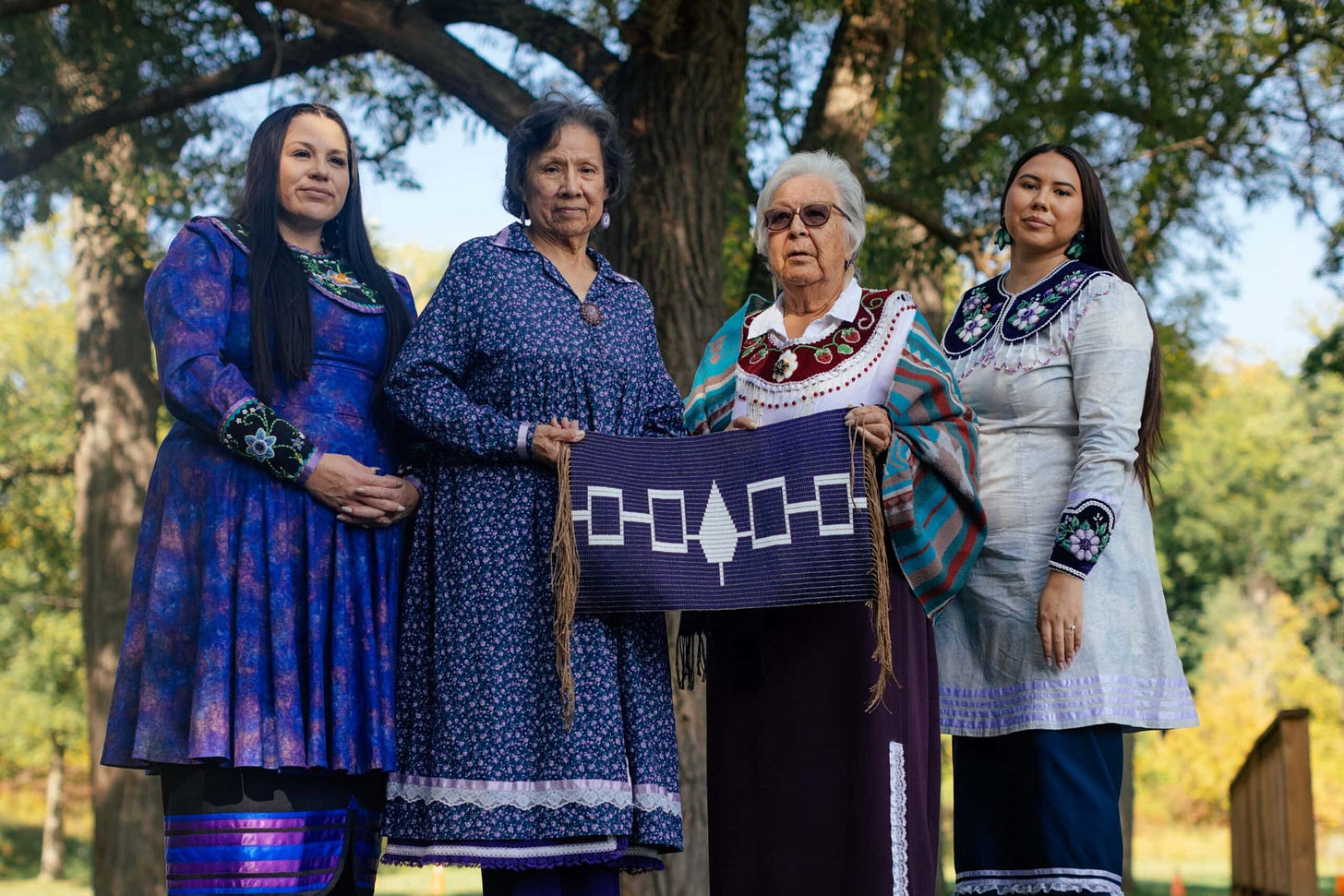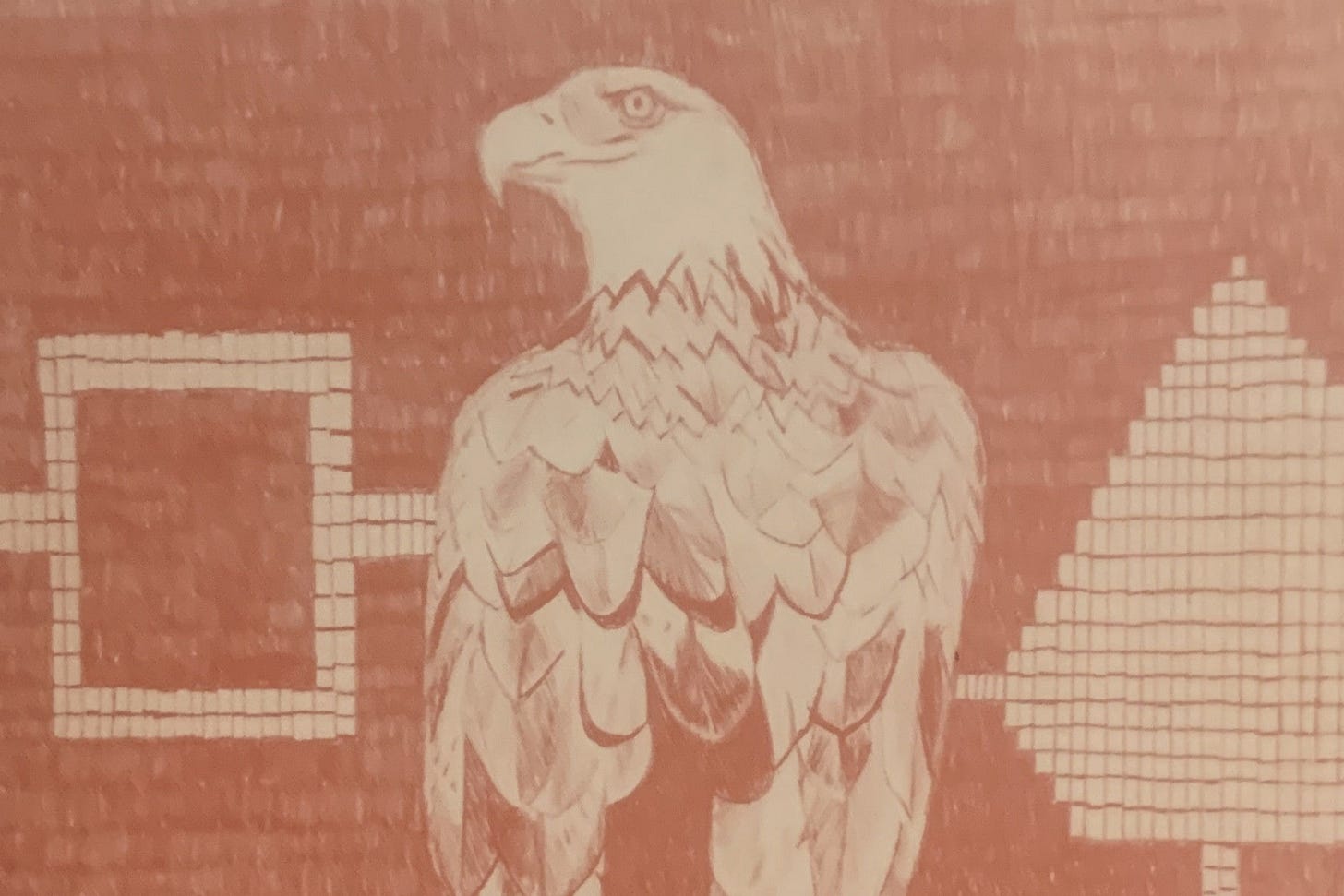Haudenosaunee Principles Guiding American Democracy
The Untold Indigenous Blueprint That Shaped the U.S. Constitution
Every Fourth of July, the United States celebrates its independence with declarations of freedom, barbecues, and bursts of red, white, and blue. Often called the nation’s birthday, July 4th is the day when the thirteen colonies formally declared their separation from British rule by adopting the Declaration of Independence in 1776. That document laid out why the colonies sought to break away—championing ideals like liberty, natural rights, and consent of the governed.
Eleven years later, the U.S. Constitution would define how the new nation would be governed. In shaping that system, the Founding Fathers didn’t only look to European philosophers—they also drew inspiration from right here on Turtle Island.
Long before 1776, a federation of Native nations upheld a powerful form of democracy—one guided by natural law and grounded in relationality. Their model of governance stood in stark contrast to Europe’s empires, and ultimately it remained a silent and influential thread in the fabric of democratic ideals that would later be adopted—though rarely acknowledged—in the founding frameworks of modern nation-states.
The Haudenosaunee Confederacy, known to settlers as the Iroquois, governed a vast, complex democracy built on consensus and cooperation. Their Constitution—the Great Law of Peace—preceded the U.S. Constitution by centuries. Their influence on the Founding Fathers is not a myth or a poetic flourish—it is a historical truth, one often omitted from classrooms and public memory alike.

The Great Law of Peace: A Living Constitution
The Haudenosaunee Confederacy was founded around 1142, according to oral tradition and calendar reconstructions by Haudenosaunee scholars. It united the Mohawk, Oneida, Onondaga, Cayuga, and Seneca nations, with the Tuscarora joining later to form what is now known as the Six Nations. Their governance system was sophisticated, participatory, and animated by natural law—not the Enlightenment-era notion of individual rights, but an Indigenous understanding of law as a living relationship among people, land, and the spirit world, grounded in the duty to act with future generations in mind.
Their Great Law of Peace, known as Gayanashagowa, was not written in ink, but woven into wampum belts and carried in oral memory. These belts—meticulously strung from the purple and white shells of the quahog clam—encode agreements, laws, and values into beadwork that continues to speak across generations. The Hiawatha Belt, considered the most foundational, records the moment the five nations came together in peace, symbolized by the white pine at the center. As described by Cayuga Sub-Chief and Faithkeeper Jock Hill, each belt acts as a living constitutional document, preserving principles of peace, unity, and relational law in a form meant to endure “as long as the rivers flow.”

At the center of the Haudenosaunee story is a figure whose vision transformed conflict into harmony—the Peacemaker. During a time when the five nations were locked in endless cycles of war and division, he emerged with a message of hope and healing. His teachings laid the foundation for the Great Law of Peace, guiding the nations toward unity and a shared commitment to peace, equity, and collective well-being.
With the support of his close companion Hiawatha, the Peacemaker traveled across the lands, bringing together the Mohawk, Oneida, Onondaga, Cayuga, and Seneca. Their journey was one of reconciliation and renewal, culminating in the planting of the Great Tree of Peace—a powerful symbol of the unity and strength found in their alliance.
Leadership under this law was deeply relational. Clan mothers, respected for their wisdom, nominated chiefs who embodied the qualities needed to guide the people: clear thinking, compassion, and foresight. These leaders practiced the Good Mind—marked by patience, deliberation, and selflessness in service to the whole community.
![Artwork by G. Peter Jemison, Onöndowaʹga:ʹ [Seneca, People of the Big Hills], hodáëʹö:ga:ʹ [of the Heron Clan]. Artwork by G. Peter Jemison, Onöndowaʹga:ʹ [Seneca, People of the Big Hills], hodáëʹö:ga:ʹ [of the Heron Clan].](https://substackcdn.com/image/fetch/$s_!Qqoc!,w_1456,c_limit,f_auto,q_auto:good,fl_progressive:steep/https%3A%2F%2Fsubstack-post-media.s3.amazonaws.com%2Fpublic%2Fimages%2Ffc076fc8-27aa-4f08-98d7-8ba97134d107_2880x1920.png)
The Great Law codified essential principles of governance, which included:
Peace – Harmony in relationships and within oneself; the foundation of all life.
Equity / Righteousness – Justice and fairness that ensures the welfare of all.
Power / Authority – Derived from unity and consent, not control.
Health – Personal and collective well-being inseparable from good governance.
The Long View – The Seventh Generation Principle: every decision honors those yet to be born.
Gratitude – Ceremonial and daily acts reaffirming connection to the natural world.
Deliberation – Emphasizing listening, patience, and consensus over haste.
Interdependence – Recognizing humanity as part of a broader web of life.
Together, these principles reveal a vibrant, generative vision of democracy grounded in the living world.
"We were instructed to carry love for one another and to show great respect for all beings of the earth. In our ways, spiritual consciousness is the highest form of politics."
— Oren Lyons, Faithkeeper of the Onondaga Nation
While the U.S. Constitution was crafted through formal processes behind closed doors, the Great Law of Peace was shared openly, debated collectively, and carried forward through ceremony and memory. Its authority came from consensus, reflecting a strength based on community, responsibility, and ongoing care. Recognizing this offers not only deeper understanding of our shared history but inspiration for reimagining the foundations of our society.
The Hidden Thread: Indigenous Influence on America’s Democratic Design
As colonists rebelled against European tyranny, many of them looked not only to Enlightenment philosophers, but to the Indigenous systems they had encountered firsthand. Among the most prominent of these was the Haudenosaunee Confederacy—whose model of federal union, public consent, and participatory governance left a visible imprint on early American political thought.
Benjamin Franklin was not just a peripheral observer of the Haudenosaunee system—he was a student of it. During his time as Pennsylvania’s Indian commissioner, he developed sustained relationships with Haudenosaunee leaders, regularly attending councils and witnessing firsthand the Confederacy’s ability to unite diverse nations without coercion. His admiration became formalized in 1754 at the Albany Congress, where he proposed a Plan of Union modeled explicitly “on the plan of the Iroquois.” He was calling for a federation—not unlike the one already thriving among the Mohawk, Oneida, Onondaga, Cayuga, and Seneca.
In Forgotten Founders, historian Bruce E. Johansen writes that Franklin’s experience with the Iroquois was not incidental—it was woven into his development of revolutionary theory and his advocacy of federal union. The Confederacy provided an existing example of what European thinkers had only theorized: leaders as servants of the people, governance by consensus, the right to impeach corrupt officials, freedom of expression, protections against unlawful home intrusion, participation by women, and the equitable distribution of resources. It was a system of self-rule.
Franklin wasn’t alone. Thomas Jefferson also viewed Indigenous societies as alternatives to the class-based hierarchies of Europe. Johansen cites at least two dozen scholars since 1851 who’ve pointed to the role of Iroquois political and social thought in shaping early American ideals—especially around federalism, liberty, collective welfare, and public accountability.
While European radicals dreamed of freedom, Johansen notes, “America acted the Enlightenment.” And it was contact with Indigenous societies—particularly the Iroquois—that turned those dreams into blueprints.

Even contemporary observers were struck by the contrast. Cadwallader Colden, a peer of Franklin, remarked that the Iroquois system had “outdone the Romans” in its sophistication and durability. It was a “well-organized polity” whose origins predated European contact and whose constitution, the Great Law of Peace, enshrined democratic values that would echo—if silently—in the documents that followed.
In 1988, the U.S. Senate passed a resolution acknowledging that “the confederation of the original thirteen colonies into one republic was influenced, in part, by the political system developed by the Iroquois Confederacy.” While this statement marked an important step, such acknowledgments remain rare. The foundational contributions of the Haudenosaunee are still missing from most textbooks, and their role in shaping American democracy is often overlooked in national discourse. Yet the truth of that influence continues to rise—shared in classrooms led by Indigenous educators, invoked in legal arguments for tribal sovereignty, and carried in the memory of those who still uphold the Great Law today.
Natural Law and the Circle of Responsibility
One of the most striking differences between Haudenosaunee democracy and its Western offspring lies in the worldview underpinning governance. The Great Law of Peace is grounded in natural law—the understanding that governance is not merely for the people, but with and for the natural world.
Whereas modern democracies often center individual rights, the Haudenosaunee frame governance as a collective duty to past, present, and future—embodied in the Seventh Generation Principle, which mandates decision-making with long-term consequences in mind.
“In our thinking, we consider the impact of our decisions on the next seven generations. This is the foundation of our governance—taking responsibility for the future, not just the present.”
— Oren Lyons, Onondaga Nation
This political structure is inseparable from a cosmology where trees, rivers, winds, ancestors, and children yet to be born all form part of the circle. Seen this way, democracy is an expression of balance.

Still Standing, Still Guiding
Despite their foundational contributions, Indigenous nations were systematically excluded from the republic they helped inspire. Their lands were seized. Their treaties broken. Their systems dismissed. And yet, the Haudenosaunee Confederacy still exists. The Great Law of Peace is still recited. Clan mothers still name leaders. The fire at the center of the longhouse still burns.
It’s one of the great paradoxes of American democracy: that it took shape, in part, through ideas drawn from Indigenous governance—models of unity, consensus, and relational responsibility—while actively working to silence and marginalize the very nations who embodied them. A system that professed liberty drew inspiration from a people it then sought to erase. And yet, the teachings endured—alive in memory, ceremony, and the daily governance of the Confederacy.
Oren Lyons, Faithkeeper of the Onondaga Nation, reminds us: “The law of nature is the law of life. Our government is a circle—not a pyramid.” This living system continues to evolve and guide.
The Past That Points to the Future
As fireworks light the sky this July 4th, perhaps the more radical act is to remember. To remember that the ideals Americans hold most dear—freedom, unity, self-governance—have roots far deeper than the Constitution, and branches that extend far beyond it.
The Haudenosaunee Confederacy is a living foundation of this land and its peoples. By learning more about this heritage and the values it carries, we open a door to inspiration and possibility for our shared future.
Honoring democracy means embracing the full story—one that includes those who shaped it and those who continue to live it. It is an invitation to reawaken a law that holds land, spirit, and governance in sacred relationship.

Acknowledgements
This reflection is shared with respect for the living traditions and sovereign voices of the Haudenosaunee Confederacy, whose teachings continue to guide and inspire.
While this piece centers on the Haudenosaunee due to their documented influence on early U.S. political structures, many other Indigenous nations upheld sophisticated systems of governance that challenged colonial models of hierarchy and control.
Historical references include Forgotten Founders by Bruce E. Johansen, The Iroquois and the Founding of the American Nation by Donald A. Grinde Jr., and Exiled in the Land of the Free: Democracy, Indian Nations and the U.S. Constitution, edited by José Barreiro, as well as the 1988 U.S. Senate Concurrent Resolution 331, which formally acknowledged the contributions of the Iroquois Confederacy to the U.S. Constitution. This framing is also informed by oral teachings, public addresses, and the reflections of Faithkeeper Oren Lyons and other Haudenosaunee knowledge holders.
With gratitude to Taiaiake Alfred and John Stokes for their insight and care in reviewing this piece, and to the artists whose visual works honor and extend these living traditions.







![Artwork by Natasha Smoke Santiago, Kanien’kehá:ka [Mohawk], Turtle Clan, Haudenosaunee. Artwork by Natasha Smoke Santiago, Kanien’kehá:ka [Mohawk], Turtle Clan, Haudenosaunee.](https://substackcdn.com/image/fetch/$s_!BW80!,w_1456,c_limit,f_auto,q_auto:good,fl_progressive:steep/https%3A%2F%2Fsubstack-post-media.s3.amazonaws.com%2Fpublic%2Fimages%2Fdac49aaa-145f-4cdd-b1e8-8a98c2335adb_2880x1920.png)
